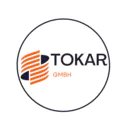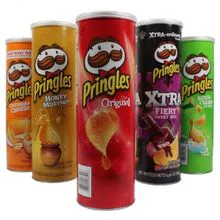Description
Polyaluminum chloride (PAC) is a chemical substance that is commonly used in water treatment processes. It is derived from aluminum chloride by partially hydrolyzing it. PAC is available in various forms, but in general, it is a complex polymer with the general formula [Al2(OH)nCl6-n]m, where n represents the degree of polymerization and m represents the total charge on the polymer.
Here are some key points about Polyaluminum Chloride (PAC):
PAC is composed of aluminum ions (Al^3+) and chloride ions (Cl^-) in a polymeric structure.
The structure is often represented as [Al2(OH)nCl6-n]m, where n and m can vary.
Composition:
Water Treatment: PAC is widely used as a coagulant in water treatment processes. It helps in the removal of suspended solids, organic matter, and other impurities in water.
Wastewater Treatment: It is effective in treating wastewater by promoting the aggregation of particles, making them easier to settle or filter out.
Potable Water Treatment: PAC is approved for use in the treatment of drinking water to meet safety and quality standards.
Uses:
PAC is preferred over traditional aluminum sulfate (alum) in some applications because it produces larger, more easily settleable flocs.
It is effective over a broader pH range than alum.
Advantages:
PAC is typically applied as a liquid, and its dosage depends on the characteristics of the water being treated.
The coagulation process involves the addition of PAC to water, where it destabilizes particles, leading to the formation of flocs that can be easily removed.
Application:
PAC is generally considered safe when used within recommended concentrations for water treatment. However, like any chemical, it should be handled with care and in accordance with safety guidelines.
Safety Considerations:
It's important to note that there are different formulations of PAC with varying degrees of polymerization, and the specific product used may depend on the water treatment requirements and conditions. Always follow recommended guidelines and regulations when using water treatment chemicals.
3F-a-PVP Crystal is a derivative that belongs to the substituted class. Known for its psychoactive properties, this crystal is a potent that affects the central nervous system. Users often report increased energy, heightened alertness, and a sense of euphoria. Structurally related to the more well-known compound α-PVP, 3F-a-PVP Crystal has gained attention in the research chemical community. Researchers may be interested in studying its effects on neurotransmitter levels, receptor binding, and overall physiological impact. However, it's crucial to note that the use, distribution, and possession of substances like 3F-a-PVP Crystal may be subject to legal restrictions, and caution should be exercised in compliance with relevant laws and regulations. Understanding the potential risks and conducting research responsibly is paramount in the exploration of such chemical compounds.
- Polymeric ferric sulfate
- Polyacrylamide Gel Crystals
- Cationic Flocculants
- Polyaluminum Chloride
- Flocculant phosphorus removal
- Polymeric ferric sulfate powder
Production Capacity:
Not informed
Delivery Timeframe:
Depends on Size of Order
Incoterms:
CFR - Cost and Freight
CIF - Cost, Insurance and Freight
CIP - Carriage and Insurance Paid to
DDP - Delivered Duty Paid
DDU - Delivered Duty Unpaid
EXW - Ex Works
FCA - Free Carrier
FOB - Free on Board
Packaging Details:
Not informed
More about
TOKAR GMBH
50-100
Employees
200K - 500K
Sales volume (USD)
100%
% Export sales
Year
Established
Business type
- Importer / Trading Company
- Representative / Agent
- Distributor / Wholesaler
- Business Service
Keywords
- Food
- Beverages
- Cosmetics
- electronics
- Rice
- cooking Oil
- Coffee
- Cars
- Trucks
- Plastic products Ver Mais
Contact and location
-
Alessandro wenzel
-
+49 xxxxxxxx
-
Frankfurt / Frankfurt | Germany






















